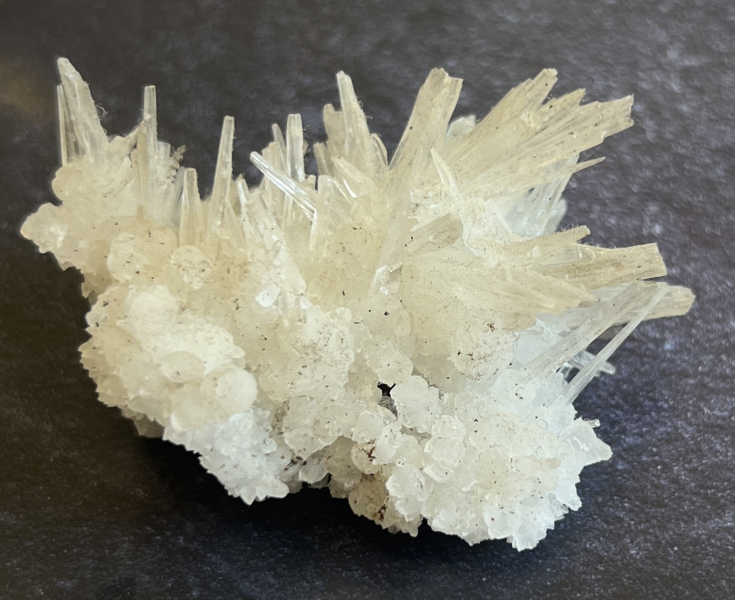- Home
- Activities
- One Object Every Month
- Aragonite
One Object Every Month
- Home
- Activities
- One Object Every Month
- Aragonite
Aragonite

Science & Technology Museum, University of Patras Campus, Greece
Aragonite is a mineral and a type of calcite. Its name (given in 1797) comes from the Molina de Aragón region in Spain, where very beautiful specimens are found. Its color is usually white, but it can also be colorless, yellow, gray, pink, black, or multicolored due to impurities. Its luster is vitreous or resinous, and it is relatively soft. As a crystalline form of calcium carbonate (CaCO₃), it has significant geological and industrial value.
In Greece, aragonite deposits can be found in the caves of Diros and Alistrati, in marine deposits in the Aegean and Ionian Seas, and in limestone rocks in mainland Greece and the Peloponnese (in very small deposits). There are no mining industries for it.
Aragonite is used in the production of lime and cement and is an important component in building materials. It also plays a role in ecology by contributing to carbon storage. Additionally, some forms of aragonite are used in jewelry and decorative objects.
List of Dates (Page event details)
- From 01 October 2024 to 31 October 2024
Powered by iCagenda
Announcements
Calendar
| Mon | Tue | Wed | Thu | Fri | Sat | Sun |
|---|---|---|---|---|---|---|
STM's Events
STM's Newsletter
Popular Articles
- Museum Water Kits
- Permanent exhibition "Telecommunications in our lives"
- The Science and Technology Museum at the Development Forum Network 2023 “University of Patras, Science and Technology Museum: Interacting with Society”
- Awarding schools in the Local Photography Competition “Capturing the water systems of my country”.
- The Second Digital Exhibition of Virtual Reality (VR) of the Science and Technology Museum is a fact!!!













